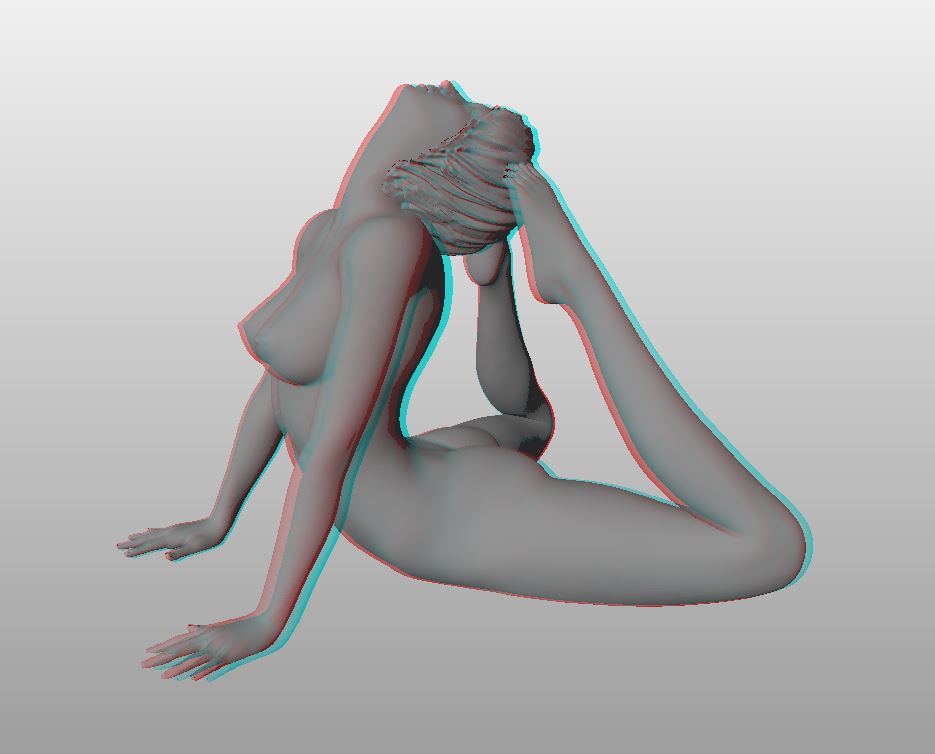How about this amazing pose in another photo I found on Pinterest?
It appears to have come from the Raw Moves collection by photographer, James Houston.
I love the point of contact of the feet, which reminds me of some of the abstract works of Henry Moore or Jean Arp.
I think it will print OK. I'm just not sure how well it would translate into a female pose.
What do you think?
Well, I had to give it a go, didn't I! As it turned out, getting the pose right was the easy part. I increased the muscle tone a bit and shaped the breasts into a position that suggest they are hanging in the correct direction.
Finding a way to actually print the model proved much more challenging.
Here is a view of the model in MeshLab.
The biggest problem was the contact point of the two big toes - I just knew that the tiny point of contact would be incapable of supporting the weight of the top leg growing upwards above it without breaking. After experimenting with several different ideas and some abortive prints, I decided to cut the model across the middle and print it in two halves. Finding the best place to make the cut took several attempts but the final solution turned out to be the obvious one - cut exactly between the two big toes at the contact point.
Here is the model in Cura, ready for slicing. I used MeshMixer to generate the support structures because it allowed me to place them exactly where I needed them.
And here is the same view in Repetier Host, showing the Gcode file ready for printing.
OK, it's finished! I had to reprint the leg because the toes broke on the first try due to poorly positioned supports. After cleaning them up in Blender I had another go and it came out much better.
I printed in PLA and after cleaning up the support material I used superglue to join the two halves together.
Straight from the printer, supports still attached.
Front view, reproducing the original pose.
Viewed from the back.
 There are some nasty blemishes left behind where the supports were removed and I've also noticed that I'm getting more Z-banding on the models than I used to see. Maybe time to think about tuning up the printer again.
There are some nasty blemishes left behind where the supports were removed and I've also noticed that I'm getting more Z-banding on the models than I used to see. Maybe time to think about tuning up the printer again.










.JPG)
.JPG)
.JPG)
.JPG)






.JPG)
.JPG)
.JPG)
.JPG)
.JPG)




















